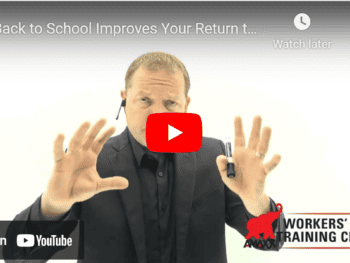There are a lot of ways to deny a workers comp claim. The easiest way is if the case is not work-related at all. The reality is that most injuries are work related, or at least they arise out of the course and scope of doing the job.
But there are a lot of ways that an adjuster can suspend or deny a claim, even though it may be compensable in the beginning. Injured workers have to follow certain legal statutes held up and reinforced by the Statutes within the jurisdiction.
Below, we discuss a few ways that claims can be suspended or coverage can be terminated, and what you should look for within each one:
1. The injured worker avoids treatment or is trying to treat with non-conventional means
There has always been a negative stigma with the occupational clinic that works with employers. Injured workers feel that these clinics do not have their own needs in mind, but rather the demands of the employer. These clinics often have long wait times to see a physician, and by the time you actually get into the exam room the doctor spends two minutes with the patient and says the injury is not work-related.
This may be the case, but with certain jurisdictions a person can treat with whomever they wish. Sometimes the medical diagnosis given by a chiropractor is held in the same regard as the diagnosis given by an orthopedic surgeon.
Adjusters are quick to pull the trigger on filing a suspension once an injured worker bails out of the occupational clinic in favor of their own primary care doctor. As stated above, however, this may not be against the rules at all. If you see this happening on your claims, be sure to discuss the rights workers have with your claims adjuster to ensure you are not missing information. Maybe the primary care doc is not providing medical records, and this is the cause of the suspension. Or maybe the primary care doc is not treating the actual comp injury and they are sending the bills to the comp carrier for treating another condition. In any case, be sure that you have all of the details before rushing to judgment.
2. Terminating wage benefits when a worker does not show for light-duty work
If an injured worker has medical restrictions, the employer should take every chance they have to find work within those restrictions. This limits wage loss expense, and keeps the worker doing something worthwhile for their employer instead of sitting at home and collecting a paycheck.
Adjusters are quick to hit that denial once a worker does not show for this light duty work. You have to be careful here, however, as some statues have a clear definition of how a light duty work assignment is given to an injured worker. A voicemail may or may not be sufficient. The offer could have to be made in writing and delivered via certified mail with the employee given enough notice to show for the work assignment. Sometimes the work tasks and hours have to be clearly stated, and if any of this information is left out it voids the work duty assignment. If you have questions about these light duty work assignments, discuss it with your claims adjuster and legal counsel to be sure you are doing it correctly on every claim.
3. The injured worker misses their IME appointment
If a worker is sent for an IME by their claims adjuster and they do not show, this doesn’t mean that their claim can be totally denied. Most jurisdictions will allow the adjuster to suspend benefits until the claimant attends their IME, but rarely will it allow a full outright denial just based on the worker not showing.
This may not be true if the worker misses several IME appointments. It is important to make sure that the claimant is being notified of the IME properly. Sometimes it will have to be with a certified letter delivered and signed for by the claimant. If this is not done properly, the suspension that was filed is rendered worthless. Do your homework and make sure these cite letters are being sent correctly.
4. The presence of pre-existing conditions
Perhaps the most common reason for a suspension or denial is the presence of pre-existing conditions where the injury is located. Let’s use a back strain as an example. If a worker injures their lower back lifting a bag, they may sustain a strain. If the strain doesn’t resolve in due time, an MRI may be performed. If this MRI shows arthritis in that same area, adjusters will commonly file a denial saying that pre-existing conditions are present and that the injury is not work-related.
This may be true, but that may not mean that the claim is not compensable. The worker still lifted the bag and may have sustained an exacerbation on top of that pre-existing condition. If the worker needs surgery, a case may be made where the surgery is not entirely due to the work incident and is not covered as part of the comp case. That may be true, but the carrier is still probably on the hook for the strain. Some jurisdictions may or may not allow this, so be sure you know what you are dealing with when it comes to pre-existing conditions and workers’ compensation.
Summary
The common theme for the above items is that even though you see an alley to dispute a claim, it may not be as strong as you think. Be sure to discuss your concerns with legal counsel, and know the proper way to do tasks, cite letters, and make sure all adjusters are following the rules properly. It will save a lot of headaches down the road.
Author Rebecca Shafer, JD, President of Amaxx Risk Solutions, Inc. is a national expert in the field of workers compensation. She is a writer, speaker, and publisher. Her expertise is working with employers to reduce workers compensation costs, and her clients include airlines, healthcare, printing/publishing, pharmaceuticals, retail, hospitality, and manufacturing. She is the author of the #1 selling book on cost containment, Workers Compensation Management Program: Reduce Costs 20% to 50%. Contact: RShafer@ReduceYourWorkersComp.com.
Editor Michael B. Stack, CPA, Director of Operations, Amaxx Risk Solutions, Inc. is an expert in employer communication systems and part of the Amaxx team helping companies reduce their workers compensation costs by 20% to 50%. He is a writer, speaker, and website publisher. www.reduceyourworkerscomp.com. Contact: mstack@reduceyourworkerscomp.com.
WORKERS COMP MANAGEMENT MANUAL: www.WCManual.com
Do not use this information without independent verification. All state laws vary. You should consult with your insurance broker or agent about workers comp issues.
©2012 Amaxx Risk Solutions, Inc. All rights reserved under International Copyright Law. If you would like permission to reprint this material, contact us at: Info@ReduceYourWorkersComp.com.

















